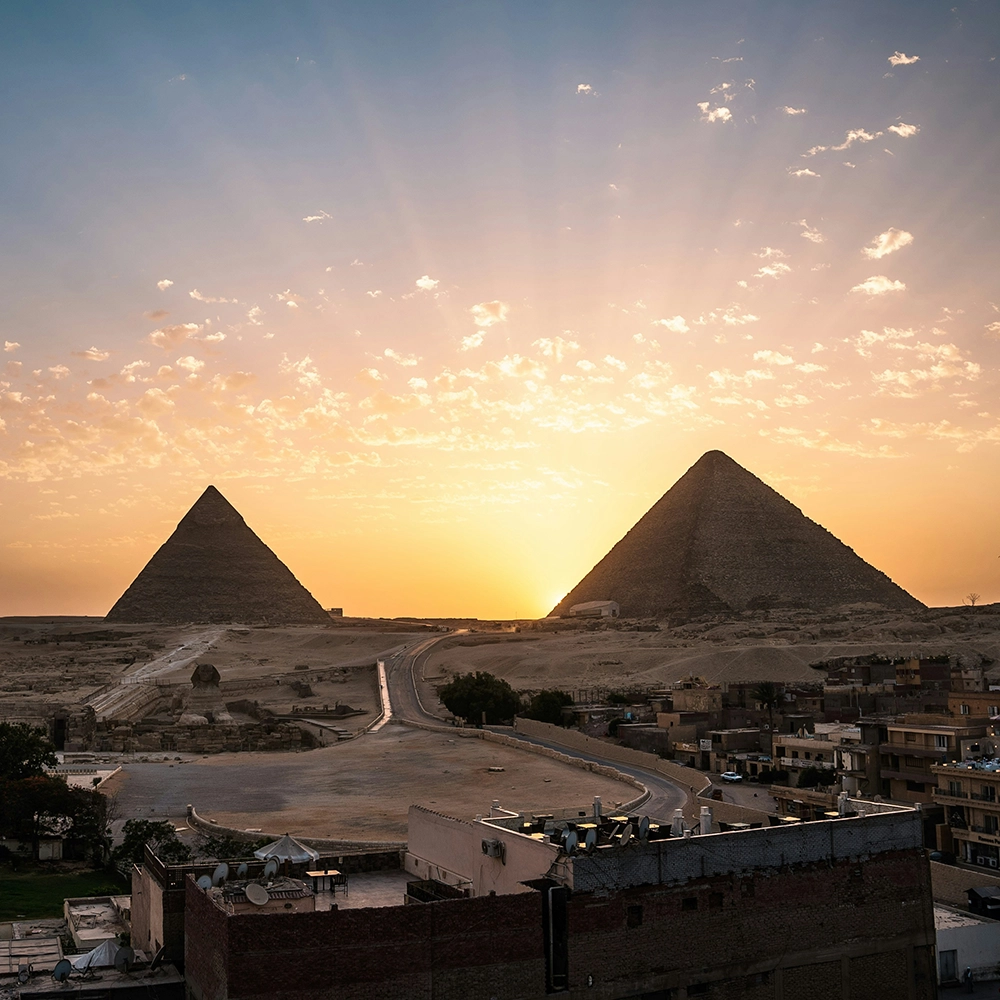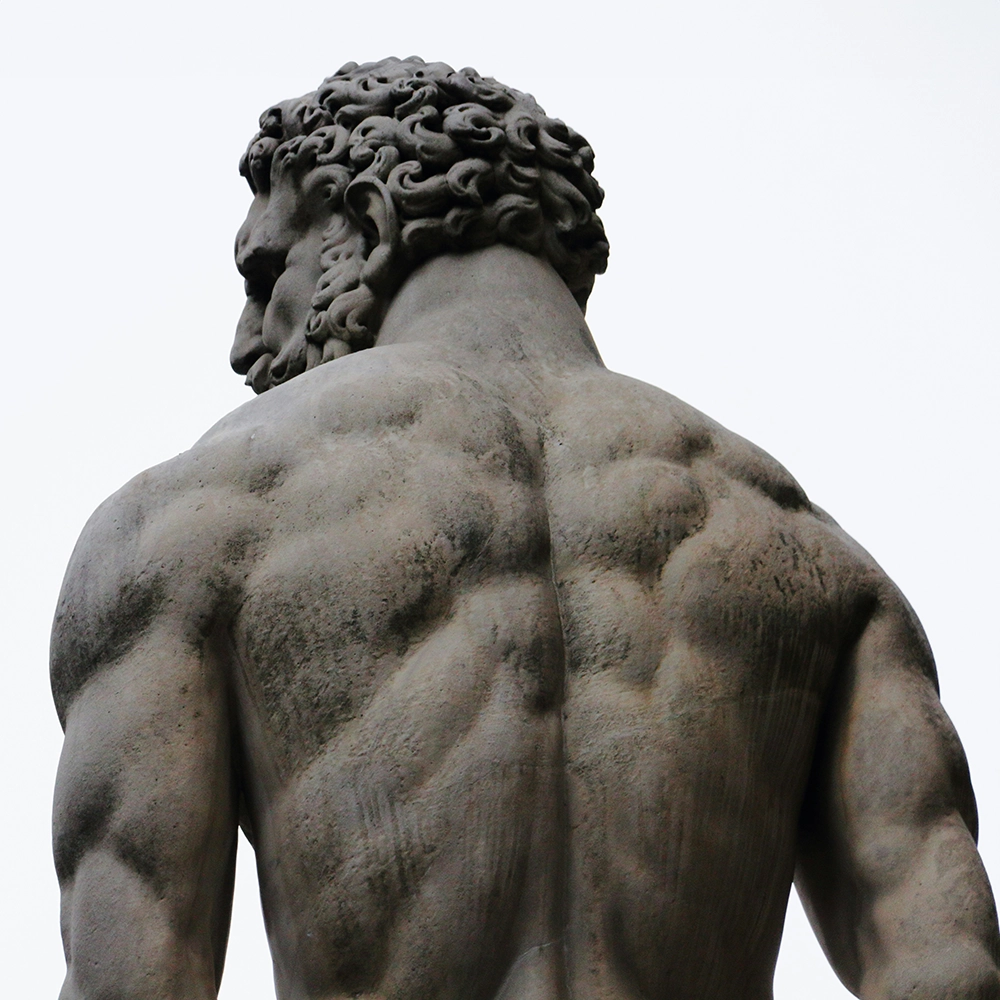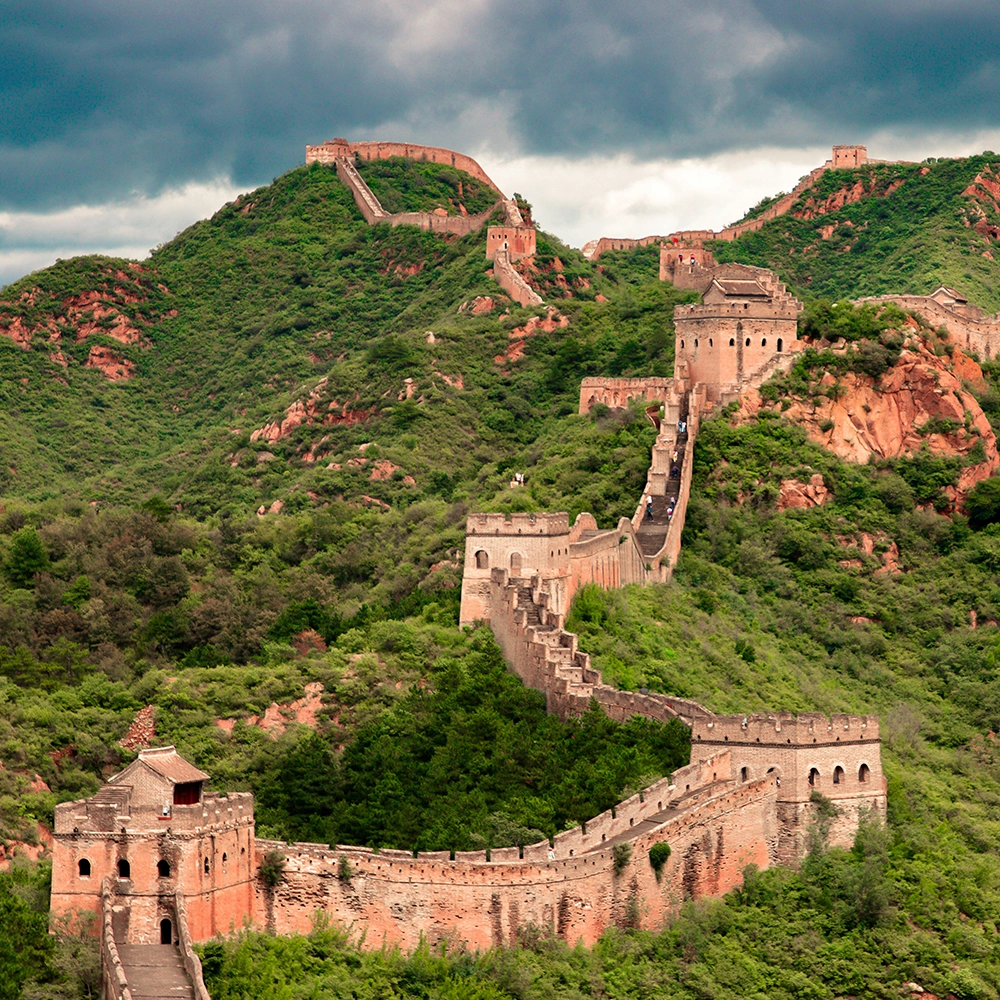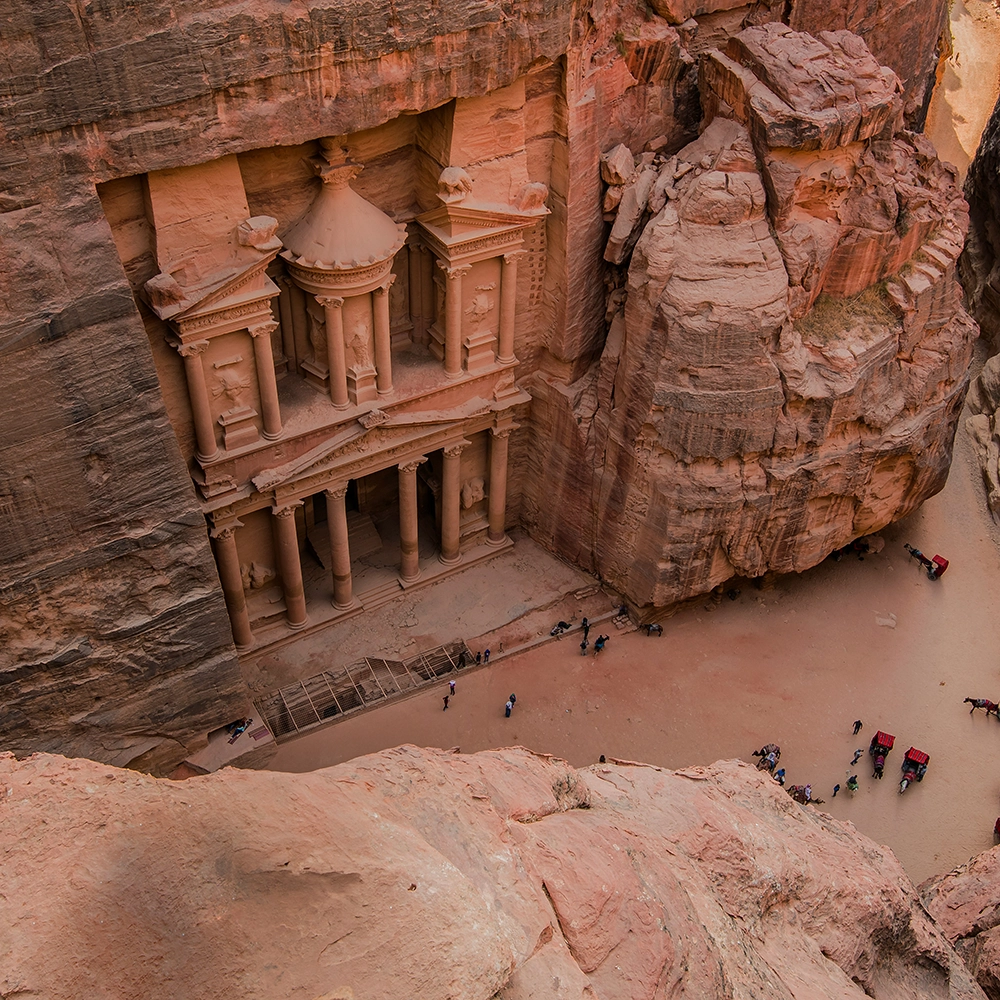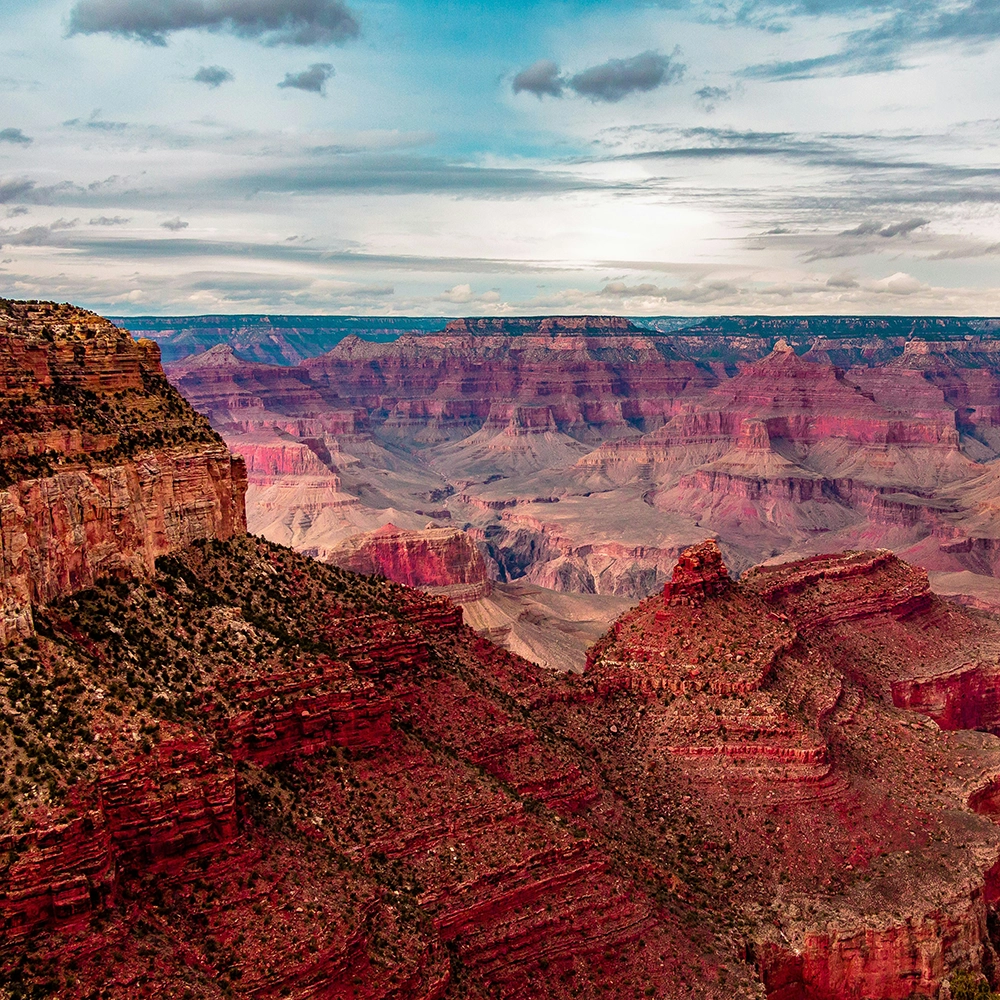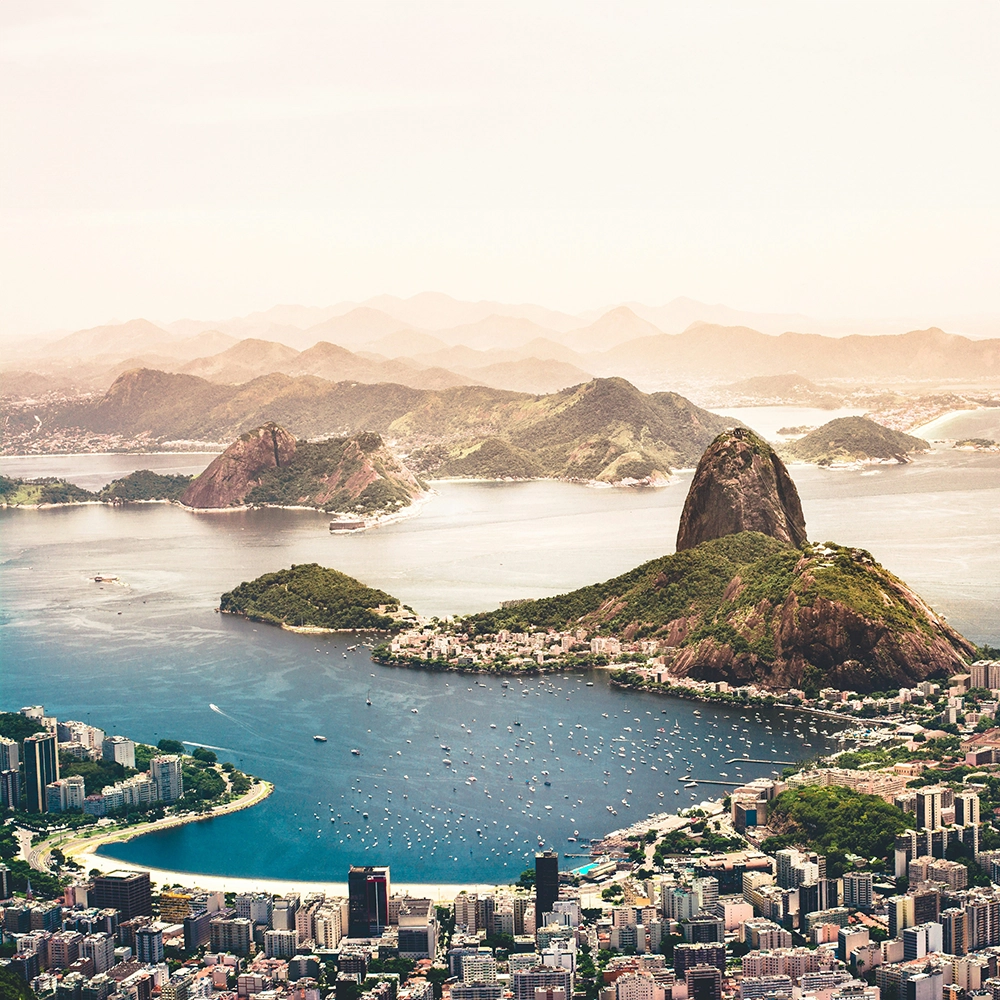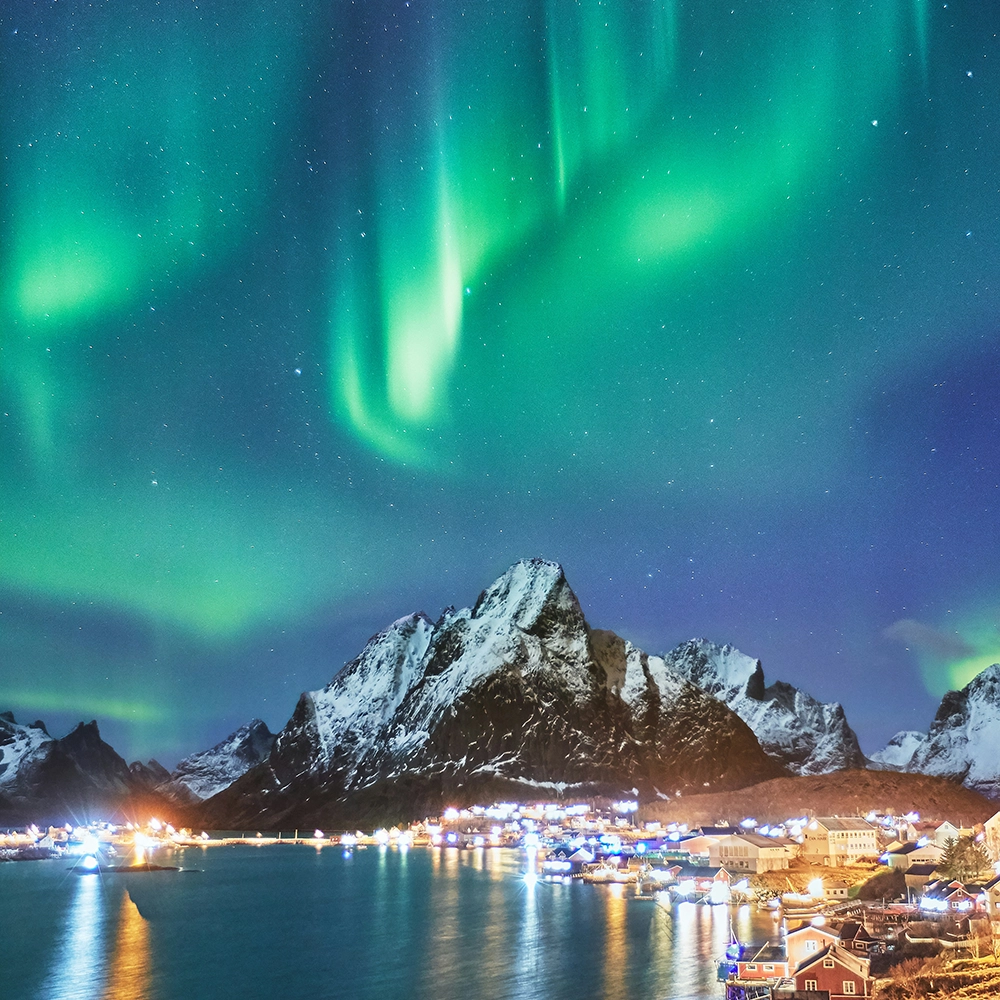Even the Ancient Greeks had travel bucket lists.
Centuries ago, historians compiled what we now know as the Seven Wonders of the Ancient World. More recently, we have the New Seven Wonders of the World and the Seven Natural Wonders of the World.
So what are these incredible destinations? And is it worth traveling to the Seven Wonders of the World?
What Are the Seven Wonders of the Ancient World?
The original Seven Wonders of the World list provides a snapshot of some of the engineering and cultural marvels of ancient times. Only one of them still exists, some are remembered only through ruins, and one might not have actually existed in real life.
1. Colossus of Rhodes
An incredible feat of Greek engineering, this 100-foot-tall statue of the sun god Helios once guarded the Mandraki Harbor in Rhodes, Greece. An earthquake in 226 B.C. brought it crashing down.
Nothing remains of the Colossus, but you can still visit the Mandraki Harbor on the island of Rhodes. Instead of Helios, you’ll find a pair of deer statues, Elefos and Elafina. The marina is also popular for yachts and cruises.
Inland, be sure to visit the Castle of Saint Nicholaos and the medieval windmills that helped to make Rhodes a UNESCO World Heritage Site.
2. Great Pyramid of Giza
Located in Egypt, the Great Pyramid is the only original wonder still standing.
The largest of the three Pyramids of Giza, the Great Pyramid held the distinction of being one of the tallest buildings ever built for nearly 4,000 years. While it’s not quite as large today due to erosion, don’t let that stop you from crossing it off your bucket list.
You can go inside the Great Pyramid as part of a tour, but climbing on the exterior is now illegal. The Sphinx is also in Giza. While it’s not technically one of the wonders of the world, you’ll probably regret returning to Cairo without visiting the iconic half-man-half-lion sculpture first.
3. Hanging Gardens of Babylon
Located (maybe) in modern-day Iraq, the Hanging Gardens were constructed around 600 B.C. as a gift to King Nebuchadnezzar II’s wife. It’s believed they were an incredible collection of trees, flowers, and other vegetation.
Beyond their beauty, the gardens would have been an engineering feat. Being in a desert, it would have required building complex irrigation systems not typical of that time.
Whether the Hanging Gardens of Babylon truly existed remains a bit of a controversy. Some argue that they’re merely a myth created by ancient Greek and Roman writers. Others say they were real but were actually gardens in Nineveh, built roughly at the same time.
4. The Lighthouse of Alexandria
The prototype for today’s lighthouses, the Lighthouse of Alexandria was built in Egypt in 280 B.C. and at the time, was second in height only to the Great Pyramid. It served many functions, from a beacon to a military lookout.
The lighthouse was torn down in the Middle Ages and replaced with a mosque. About three centuries later, a fort was built from its ruins.
While the lighthouse no longer exists, some of its remains were recovered from the sea. An underwater museum has been proposed to showcase this history (they’ve been talking about it for about 20 years, so don’t buy your tickets just yet). While you wait for the museum, there are many snorkeling and scuba tours in Alexandria to feed your craving for history.
5. Mausoleum at Halicarnassus
Located in modern-day Turkey, the Mausoleum was built as a tomb for the king, Mausolus, in 350 B.C. Among several elaborate decorations, the structure featured a statue of the king and queen riding in a chariot. The mausoleum was destroyed in 1522 A.D. by Crusaders.
There is a museum for the mausoleum in Bodrum, Turkey. It only has plaster copies of some of the marble reliefs that avoided destruction. To see the original reliefs and other surviving statues, you’ll have to travel to the British Museum in London.
6. Statue of Zeus at Olympia
This 40-foot-tall statue featured the Greek god Zeus on a large throne. It was created from ivory, wood, bronze, and gold. The structure left its visitors in awe for more than 800 years before being lost to history.
Although the statue and the Sanctuary of Olympia that housed it no longer remain, you can visit the Archaeological Museum of Olympia today. It’s one of the world’s best collections of art covering thousands of years, including exhibits dedicated to the sanctuary and the Olympic Games.
7. Temple of Artemis at Ephesus
Originally, the temple, which was dedicated to the goddess Artemis, was built alongside the River Ephesus in Turkey around 800 B.C. It was moved and rebuilt several times before ultimately falling during the rise of Christianity in 268 A.D.
John Turtle Wood unearthed the remains of the temple in 1863 and sent them to the British Museum, where they can be seen today. You can also visit the temple ruins at the archaeological site of Ephesus near present-day Selcuk, Turkey.
What Are the New Seven Wonders of the World?
If the original Wonders of the World are largely a thing of the faraway past, the New Seven Wonders of the World are alive and prospering. They’re among some of their countries’ most visited tourist attractions, drawing millions of people from around the world just to witness their magnificence.
1. Great Wall of China
Holding the title of “longest human-made structure in the world,” the Great Wall is actually many walls running through northern China and southern Mongolia.
One significant stretch is particularly well preserved and is the part that most of us visit today. The section running from Mount Hu in Liaoning province to Jiayu Pass in Gansu province is 5,500 miles long, up to 21 feet wide, and nearly 33 feet tall at its highest point.
The Great Wall is known for its fascinating history as much as for its remarkable engineering. It connected fortifications across the regions to create a more impenetrable defense against would-be invaders. While some sections were built of stone, others used existing ditches, moats, and irrigation systems. Some parts of the wall aren’t a wall at all but rather natural barriers like mountain ridges.
One of the best parts of the Great Wall to visit is in Mutianyu, only about 90 minutes by car from Beijing. It isn’t the most visited section, but that’s not a bad thing since it means you likely won’t be overrun by other tourists. The paths are restored and relatively flat.
2. Christ the Redeemer Statue
When you go to Rio de Janeiro, Brazil, look up. Standing 2,300 feet above the city at the peak of Mount Corcovado, is the hard-to-miss Christ the Redeemer statue. Its size also makes it quite eye-catching. It’s 98 feet tall from head to toe (add another 26 feet for the pedestal) and 92 feet wide from fingertip to fingertip of the sculpture’s outstretched hands.
One of the most popular ways to see the Christ the Redeemer is by train. A short ride takes you through an urban rainforest before dropping you off at the statue for a tour. Alternatively, you can hike to the top. There have been reports of increasing petty theft, so don’t hike alone and do leave any valuables (including your phone) at your hotel.
Because it is one of the Wonders of the World, crowds can get large. Avoid the worst of them by visiting early in the morning. If lots of people don’t bother you, though, go in the early evening and catch the incredible sunset over the city.
3. Machu Picchu
Sometimes called the Lost City of the Incas, Machu Picchu is thought to have been a royal retreat for the Incas in the 15th century before it was mysteriously abandoned. Because it’s nestled in the Andes Mountains between two peaks, Machu Picchu went largely unnoticed by European and American explorers for about 400 years.
Since its rediscovery, Machu Picchu has brought millions of tourists from all over the world to Peru. The Sun Gate and Temple of the Sun serve as relics of one of the world’s first great civilizations.
You can arrive on foot, like its original inhabitants would have done, by taking any of the multi-day treks. Or take a more leisurely route via the train. Either way, you’ll be treated to jungle views that only build anticipation of your arrival at Machu Picchu.
Much is still unknown about the site, but that adds to the allure of this incredible wonder. You’ll love exploring what remains of the ruins and imagining what might have been.
4. Chichén Itzá
Located in the jungles of Mexico, toward the tip of the Yucatan Peninsula, is the abandoned ancient city of Chichén Itzá. More than two million people visit the archeological site annually to get a glimpse into the art, architecture, and science of the Mayan culture.
When we think of Chichén Itzá, most of us picture the site’s tiered pyramid, El Castillo, which served as a temple to the deity Kukulcán. Equally fascinating to explore, though, are the Temple of the Warriors, the Observatory (remember how important astronomy is to the Maya?), and dozens of other ruins.
Also on site is the Sacred Cenote, one of the reasons Chichén Itzá got its name, meaning “Where Wise Men of the Water Live.” Freshwater cenotes remain a draw in the region for travelers seeking healing, rest, and rejuvenation.
5. Roman Colosseum
One of Italy’s most well-known relics, the Colosseum was once the height of entertainment for its famed gladiator contests. It seated 50,000 spectators — more than twice the capacity of New York’s Madison Square Garden — which is only one small reason it’s such an architectural marvel.
The Colosseum was one of the few freestanding amphitheaters of its time in the 1st century; most were built into hillsides for support. This design choice led to the vaults and columns that give the Colosseum its iconic appearance.
There are several ways to see the Colosseum. Depending on how in depth you want your visit to be, you can explore on your own or book a tour. You’ll need a guide for the underground levels, and reservations to see the Attic on the upper levels. There’s also The Museo del Colosseo on the second level.
In short, plan your visit beforehand and give yourself plenty of time to see it all.
6. Taj Mahal
Built nearly 400 years ago as a statement of love, the Taj Mahal is thought to be the height of Indian Mogul architecture. It’s easily India’s most recognizable building, palace or otherwise.
The Taj Mahal features a white marble exterior and an interior mausoleum with the tombs of its designers underneath. Throughout the complex are pietra dura — stone with inlays of jade, crystal, amethyst, and other semiprecious gems — and Arabic calligraphy.
The mausoleum isn’t the only structure in the complex, though. Visiting the other sites might not be as popular, but that means they’ll also be less crowded.
And the Taj Mahal can get super busy with other tourists. Start your tour early in the morning for the most unbothered visit or for the best chance of taking photos not filled with strangers.
Other pro tips for visiting the Taj Mahal include hiring a legitimate tour guide rather than someone hawking their services on the street, and dressing modestly. Although there is no dress code, the Taj Mahal is a working mosque. Covering your shoulders and not wearing short skirts or shorts is an appreciated sign of respect.
Despite its beauty, the Taj Mahal has suffered years of decay. This is largely due to environmental pollution. Although efforts are ongoing to reduce the impact of that pollution, it is slow progress.
7. Petra
Also known as the Rose City for the red rock it’s built from, this ancient Jordanian city was once part of a major trade route. Going by its Greek name meaning “Rock,” Petra is considered one of the most beautiful places in the world and was even referenced in the Bible by the name Sela.
It has been inhabited, invaded, and abandoned countless times over the centuries, and it wasn’t really until the 1950s that the rest of the world took notice of this wonder. Excavations during that time uncovered tombs, temples, monuments, and the High Place of Sacrifice, an altar from biblical times.
The most popular spot today is the Treasury, or Al Khazneh. You’ll likely recognize the facade with Greek-style pillars carved directly into the rock wall from pictures and movies.
The exterior of the Treasury is illuminated by candlelight on certain nights, so you might decide to time your visit to catch this view. Just be prepared to pay for an extra ticket to see it.
To get the most bang for your buck, it actually makes more sense to buy a multi-day ticket. Adding an extra day or two to your itinerary adds just a tiny amount to the cost of a single-day entry. Plus, with so much to explore, it will be worth the extra time and expense.
What Are the Seven Natural Wonders of the World?
So far we’ve only celebrated manmade wonders. But Mother Nature has her own list. These one-of-a-kind phenomena that are the Seven Natural Wonders of the World shouldn’t be missed.
1. Grand Canyon
Formed by the Colorado River in the U.S. state of Arizona, the Grand Canyon has been named one of the seven natural wonders for its cultural significance and breathtaking beauty.
The Grand Canyon is nearly 300 miles long. Its widest point spans 18 miles, and its deepest more than one mile. Being so massive, it shouldn’t be a surprise that the canyon incapsulates a range of geologic history, mountains, gorges, plant life, and wildlife. Ecosystems and weather conditions can vary dramatically from rim to rim and top to bottom.
Some of the ecosystems aren’t the friendliest for habitation, making the cultural history of the area even more impressive. Cave-dwellers made the Grand Canyon their home as early as pre-historic times, followed by Native American tribes such as the Navajo, Havasupai, and Hualapai. European explorers tried their hand at taming the land before the American government eventually turned much of the canyon into a national park.
The best and safest way to experience this wonder is by visiting Grand Canyon National Park. If you’ve never been, head to the South Rim, which is more touristy but for a reason. It has the most iconic highlights and will give you an unforgettable experience.
To get away from the crowds and see the canyon from a different perspective, try the North Rim. Keep an eye on the weather, though, as this side of the canyon closes at first snowfall.
2. Great Barrier Reef
Located off the northeast coast of Australia, the Great Barrier Reef is known for its natural beauty and vast diversity of marine life. It’s actually a collection of more than 2,000 individual reefs, all formed over millions of years from the skeletal waste of marine organisms.
The coral, sea anemones, and sea sponges are certainly beautiful, but that’s not all you’ll encounter in the reef. There are also thousands of fish and other animals. African safaris have the Big Five, but the Great Barrier Reef has the Great Eight — clownfish, giant clams, manta rays, Maori wrasse, potato cod, sharks, turtles, and whales.
Snorkeling or diving is perhaps the best way to see the reef. Use only registered and responsible tour providers that can show you the reef while minimizing humans’ negative impact on the marine environment. If you’d rather stay out of the water, try a helicopter tour or visit one of the hundreds of islands.
3. Harbor at Rio de Janeiro
Also called Guanabara Bay, the harbor makes the list of natural wonders primarily for how massive it is. It’s the largest deep-water harbor in the world (by volume) and measures more than 80 miles long.
Overlooking the harbor are Sugar Loaf Mountain, Corcovado Mountain (site of the Christ the Redeemer statue), and other granite peaks. These are some of the best sites to get a good perspective of the harbor. The aerial view is really the only way you can appreciate the sheer size of this wonder.
Once you’ve seen the harbor from above, head down to the beaches, stretching 50 miles. This includes Copacabana Beach, although many people say it’s overrated. Paradoxically, its popularity means it's often overrun with people and isn’t always the cleanest or the safest.
Instead, try Praia Vermelha (“Red Beach”) or Grumari Beach for a more local and less-hustled feel.
4. Mount Everest
The highest peak on Earth at 29,029 feet, Mount Everest sits within the Himalaya Mountain Range in Nepal. Everest has been part of local culture since long before it was added to this list of natural wonders. One translation of Chomolungma, the mountain’s Tibetan name, means “Goddess Mother of the World.” Sagarmatha, the Sanskrit name, translates to “Peak of Heaven.”
The mountain itself is much too rugged and severe to support human life, but, although it’s still not easy, the valley is home to small communities.
Among them are Sherpas who traditionally have viewed Mount Everest as sacred and not to be climbed. The influx of foreign climbers attempting to conquer the peak changed that as the economic benefit of aiding such expeditions became too difficult to turn down.
Side note: The Sherpas are a group of hill people from the area, not just porters, despite popular belief.
Climbing Mount Everest simply isn’t in the cards for most of us; it requires high levels of technical skill, not to mention time, money, and nerves of steel. Even reaching Everest Base Camp is a bigger commitment than the majority of travelers can make.
Alternatively, you could visit Sagarmatha National Park. You’ll still need to be in excellent physical condition to handle the high altitude, and some trekking is almost inevitable. If you can manage it, though, you are guaranteed a once-in-a-lifetime experience.
5. Northern Lights
Scientifically known as Aurora Borealis, this naturally colorful lightshow can be seen in various locations around the globe. It’s hard to predict when and where exactly you’ll get the best view, since how vivid the lights are depends on weather and solar activity.
You can improve your odds of seeing this brilliant natural phenomenon by traveling to Canada, Alaska, Norway, or Iceland.
Be prepared to travel off the beaten path so you can get away from light pollution. And dress warmly. Iceland, for example, gets only about five hours of sunlight in January, which is why it’s frequently named one of the best places to see the Northern Lights. The average temperature in January is just below freezing, and you might be standing in the dark in the middle of nowhere for a while to get the best view.
6. Paricutin Volcano
Located in Michoacan, Mexico, and standing at 1,390 feet, the Paricutin Volcano is one of the youngest volcanoes in North America. The cinder cone formed after nine years of eruptions, from 1943 to 1952, at which point it became dormant.
The appeal and awe of this natural wonder is in the way it shows the Earth’s ability to reshape itself. You can see it for yourself on foot or horseback. Regardless of the route, it will take several hours to reach the top but only a few minutes to descend as you slip-slide your way back down the black sand slopes.
On the edge of the village of Paricutin is the Templo de San Juan Parangaricutiro. When the volcano erupted, it buried two towns. What remains is the top of this church, the spires rising out of black lava rock.
Make your way over the rough terrain to explore the ruins. You can also visit the church’s altar, which was virtually untouched by lava.
7. Victoria Falls
Victoria Falls can be found on the Zambezi River at the border of Zambia and Zimbabwe in Africa. The falls measure more than 5,500 feet across, more than doubling the width of Niagara Falls. Victoria Falls is also twice as deep as its cousin on the U.S./Canadian border.
Although it received its English-language name in honor of Queen Victoria in 1855, it is known as Mosi-oa-Tunya, or “the smoke that thunders,” by the Kalolo-Lozi. The Mosi-oa-Tunya National Park is on the Zambia side, while Victoria Falls National Park is located on the Zimbabwe side of the falls.
This lush and powerfully natural area is home to countless species of plants, including acacia, teak, and ebony. You’ll also find hippos near the falls, as well as other African favorites like lions and zebras in nearby grasslands.
Plan a trip to Victoria Falls and you’ll have somewhat different experiences depending on which side you visit (although it’s relatively easy to cross the border if you want to do both). Some of the most iconic views of the falls and historic hotels can be seen on the Zimbabwe side. Go to Zambia, and you have the Livingstone Museum and Devil’s Pool, a bucket list stop for any adrenaline seeker.
Protect Yourself on Your Wonderful Adventures
For most of us, these wonders of the world aren’t in our own backyards. To see them — and experience some of the most awe-inspiring sites Earth and humankind have to offer — you have to go abroad. And you might end up straying far from the typical tourist track.
Whenever you travel internationally, make sure you have travel insurance to protect your trip and your health. It’s impossible to predict what might happen during your explorations. Your itinerary could change, you might get sick or hurt, there might be an emergency at home that requires you to return unexpectedly.
Travel insurance can cover the unplanned expenses of these unexpected events. Find the right plan for your adventure at SevenCorners.com. You might be surprised how affordable coverage can be when you get a commitment-free quote.
Need some advice? Our licensed travel insurance agents are ready to help.

